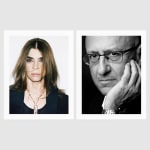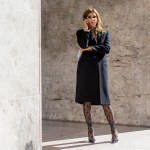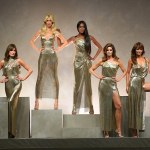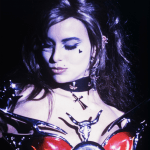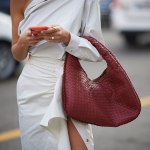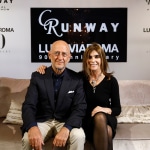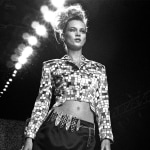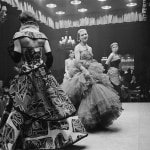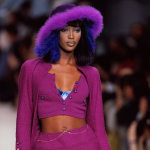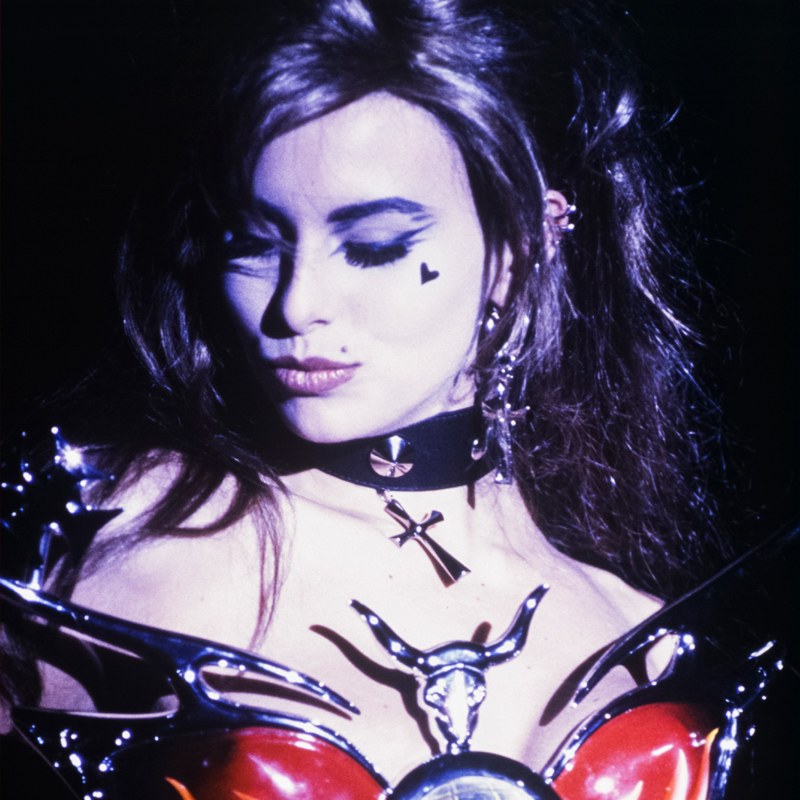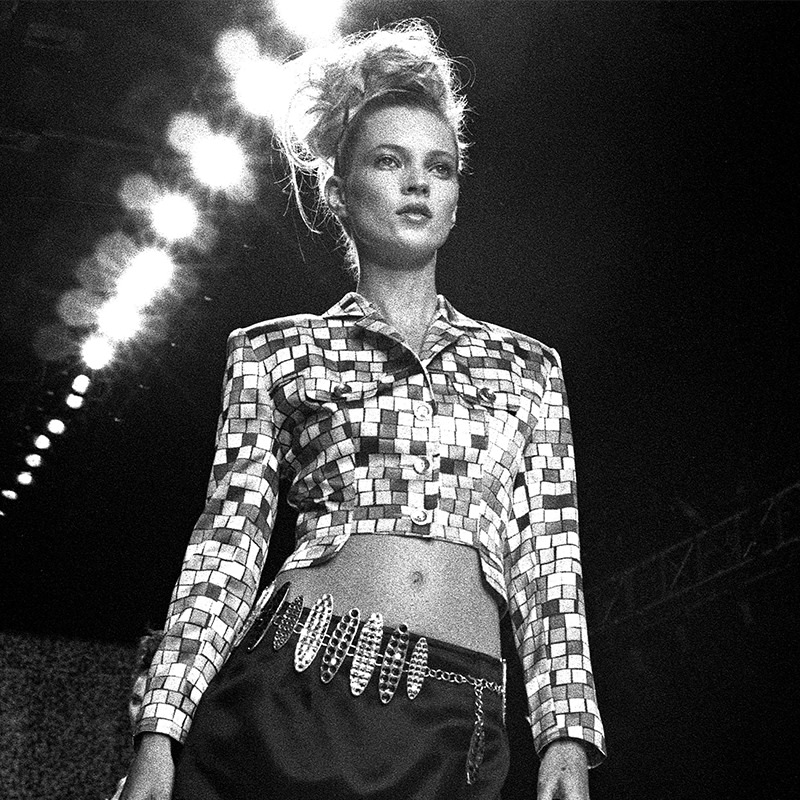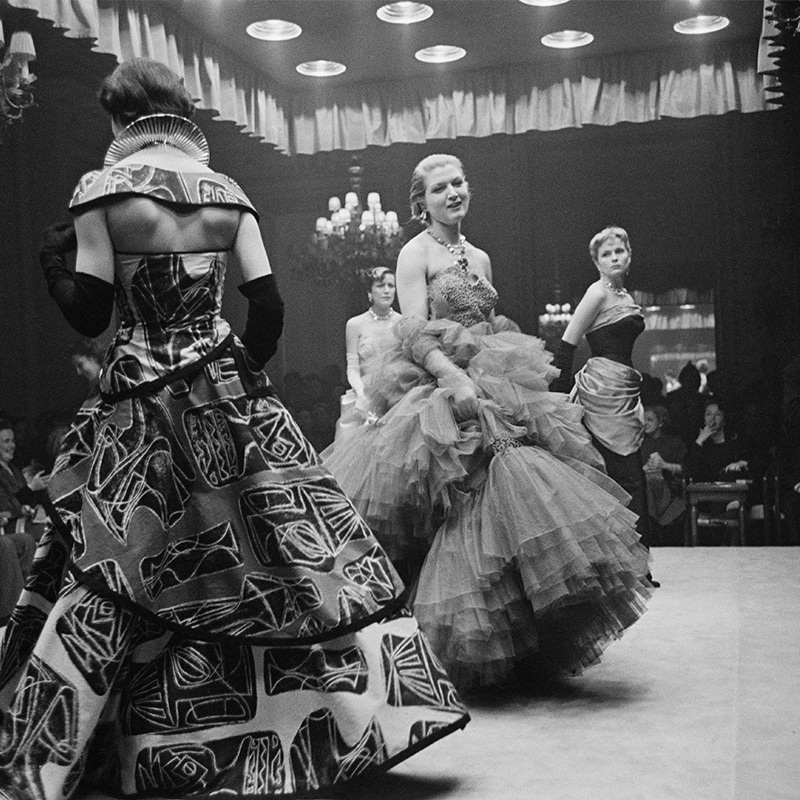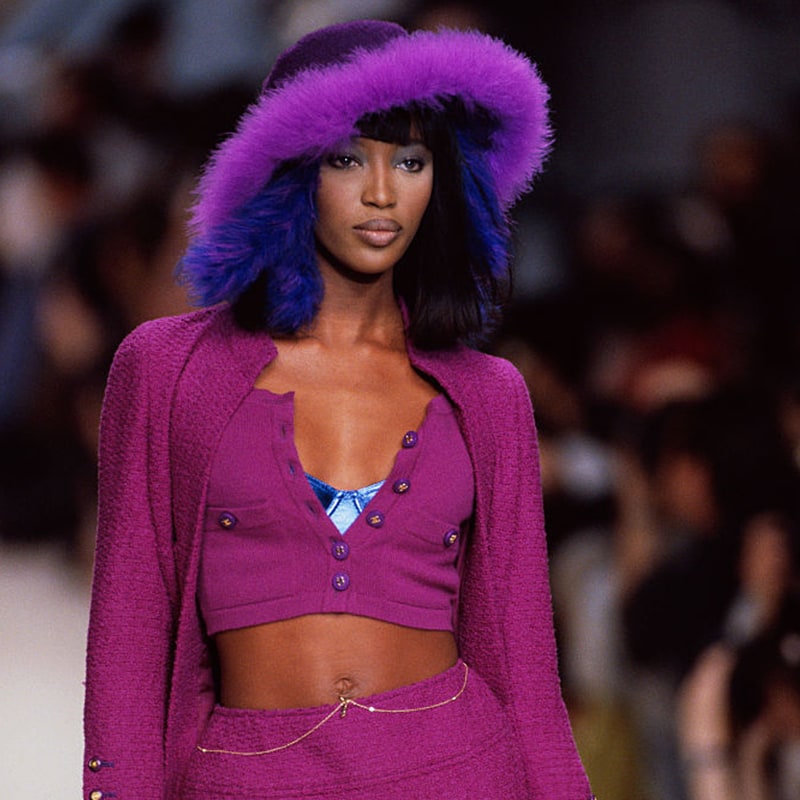Classico e Moderno

From the Roman Empire to the present, Italianate creativity has set an exceptional standard for artistic ideas and forms, sparking inspiration in other realms outside of the world of art—especially in fashion.
The earliest instance of such influence can be traced to Byzantine art in which religious expression was a major theme. Among the most famous works is Giotto di Bondone’s expressive “Madonna and Child,” 1310. Known for the visual depth he brought to the artform, the artist is widely considered to be the father of modern European painting. Giotto’s counterpart, Duccio di Buoninsegna, founded the Sienese School of Italian painting, and his gold-infused altarpieces were famed for their unique emotion and spirituality.

Centuries later, the art pieces from this period hold a reigning presence in designers’ collections. Gilded and brocade creations abounded at the Christian Lacroix Haute Couture Fall/Winter 1989 show, featuring the standout “Gold-Gotha” jacket that was anchored by an oversized jewel-adorned cross. Gianni Versace, too, was inspired by the era and referenced Byzantine mosaics in his detailed, vibrant tapestry patterns. The designer later revisited this period for Fall/Winter 1998 with embellished cross motifs—which were also on Karl Lagerfeld’s mind for the Chanel Métiers d’Art 2008 collection—symbolizing devotion to both art history and fashion.

Following the Byzantine Empire came the Renaissance era—the Golden Age of Italian art—which saw joy and beauty in the works of legendary artists like Leonardo da Vinci, Michelangelo di Lodovico Buonarroti Simoni, and Sandro Botticelli. Da Vinci combined technical theory and design in his iconic “Last Supper,” 1490s and “Mona Lisa,” 1503–06 paintings. He was the inspiration behind Gherardini’s 2012 special edition Pretiosa bag, created from the shape and details of a sketch by the Renaissance artist. Fashion house Louis Vuitton also looked to da Vinci for its Old Masters handbag collaboration with Jeff Koons in 2017. The limited edition bag was overlaid with a Mona Lisa image and had the artist’s name lettered in metal hardware, thus bridging historic and modern artistry.

Another master of the Renaissance, Michelangelo is renowned for his sculpture of “David,” 1501–04 and Sistine Chapel frescoes, 1508–52. The latter directly inspired George Rollo’s hand-painted “Creation of Adam” sneakers for Nike in 2018, as well as Elie Saab’s blue-and-brown color palette and dramatic taffeta and georgette silhouettes for his Haute Couture Fall/Winter 2008 collection. Renaissance creator Botticelli is recognized for his vivid paintings like the “Birth of Venus,” 1485–86. In homage to the artist, Donatella Versace dreamed up a collection of goddess-like gowns in feminine, fluid pastels for Spring/Summer 2012, while, years before, Thierry Mugler referenced “The Birth of Venus” for his pearl and pink satin gown for Fall/Winter 1995, which was recently brought out of its archives for Cardi B to wear to the 2019 Grammy Awards.


Renaissance art led to Italian Mannerism and its complex, exaggerated imagery. Gucci’s creative director Alessandro Michele was particularly struck by portraitist Agnolo Bronzino’s works, taking “Portrait of Maria de’ Medici” as an example of what he considers beautiful for the launch of the Gucci Beauty instagram. It also became the hair and makeup inspiration for the brand’s Gucci Resort 2018 collection, which was set among frescos at Italy’s Pitti Palace. Michele’s fur-trimmed capes, pearled headwear, and golden gowns bore a resemblance to the styles seen in Bronzino’s “Portrait of Eleanor of Toledo and Her Son,” 1545. Mannerist artist Giuseppe Arcimboldo’s influence has also been felt in fashion. His hallmark fruit, vegetable, and floral portraits were printed onto dresses and floor-length jackets in Rei Kawakubo’s Comme des Garçons designs for Spring/Summer 2018.

Italian portraiture continued to inspire style in the following centuries. Giovanni Boldini—known as the Master of Swish for his fluid painting style—combined elegance and refinement in his expressive portraits of socialites, which inspired Alexis Mabille’s Fall/Winter 2013 collection. With hand-painted pants and ivory floral details on gowns, the graceful folds resembled the looks of Boldini’s own fashionable sitters. His “Madame Charles Max,” 1896 was also a reference for Jonathan Anderson’s powder blue, delicately draped gown for Loewe in Fall/Winter 2017.

In the early 20th century, Futurism came to light, centered around the technology and innovation of the Machine Age. Artist Giacomo Balla, credited as the founder of the Futurist movement, is known for his bright geometric depictions of motion. His artworks are standing references for Italian fashion designer Laura Biagiotti—whose foundation holds one of the largest Balla collections in the world. Missoni, too, counts Balla’s art as well as Gino Severini’s neo-classical works, as having an influence on the fashion house’s signature zig zag pattern. Futurism merged with style again in the “TuTa” jumpsuit designed by artist Ernesto “Thayaht” Michahelles in 1919. Thayaht applied his apt illustration to sketching designs for couturier Madeleine Vionnet from 1919 until 1925, also creating his own fabrics, jewelry, and furnishings.


Post-Futurism, Surrealism became a major cultural force, uniting the conscious and unconscious minds. Pioneer Giorgio de Chirico developed an inventive, angular style of painting—an avant-garde aesthetic that spurred the work of Salvador Dalí, imaginative artist and designer of the fantastic. “The Persistence of Memory,” 1931—Dalí’s famous melting-clocks painting—was reinvented as the amorphous face of the 1967 Cartier Crash watch, and Dalí himself designed the bejeweled “Eye of Time” brooch, an oft-referenced optical motif. The artist worked with couture visionary Elsa Schiaparelli to create Surreal designs like the iconic “Lobster Dress” of 1937, which was resurrected under the house’s creative director Bertrand Guyon in 2017. Schiaparelli’s butterfly and insect themes have also resurfaced in more recent collections by Jean Paul Gaultier, Thierry Mugler, and Alexander McQueen, illustrating how the history of art and design can provide insight into fashion’s future.

Since then, contemporary Italian art has also had a profound effect on fashion in countless ways. Artist Francesco Clemente, celebrated for his model portraiture, has influenced designers like Tory Burch. His artwork from the 1998 movie Great Expectations inspired Bibhu Mohapatra’s bright florals and jeweled pieces for Fall/Winter 2018. Designer-turned-artist Gianluca Traina uses his experience in fashion to experiment with unpredictable media like PVC for his 3D mosaic sculptures, while surrealist duo Maurizio Cattelan and Pierpaolo Ferrari have worked with everyone from Kenzo to MSGM.

On the street-art scene, the works of Italy’s collective of graffiti muralists, such as Never2501 and Peeta, have inspired graffiti-tagged ensembles on the runway, including Jean Paul Gaultier’s Fall/Winter 2012 and Moschino’s Fall/Winter 2015 collections. Another artist and fashion aficionado, Francesco Vezzoli—who collaborated with Prada for the “Opéra Pompidou” costumes and exhibited his artwork at the Fondazione Prada—is known for historically referential artworks as well as model and celebrity portraits that merge the worlds of art and style.

Since the early history of Italian art, artistry and fashion have been inextricably linked. And without the compelling vision of these artists, fashion, without a doubt, wouldn’t be where it is today.


